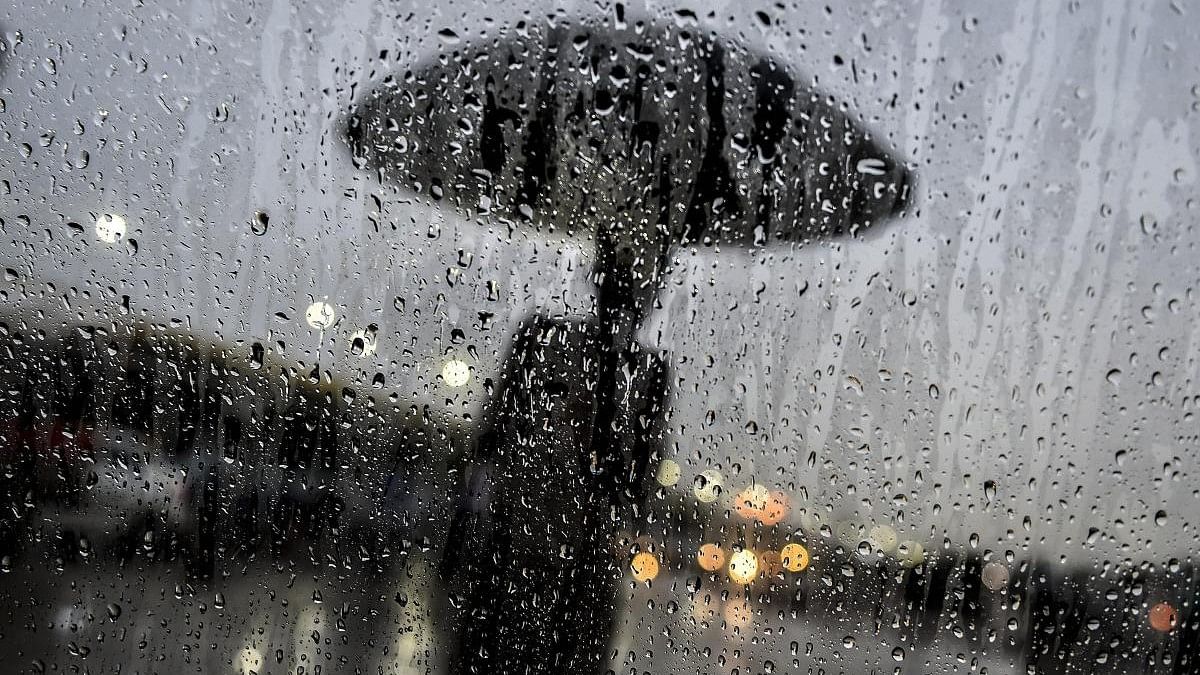
Representative image of monsoon rains in Karnataka.
Credit: PTI File Photo
Monsoon rain has been on a downward trend in Karnataka during the last six decades, a new study that analysed the pattern in the state over 120 years has found, while also noting the rise of extreme rainfall events (EREs) during this period.
The study by researchers at the Council of Scientific and Industrial Research’s Fourth Paradigm Institute (CSIR-4PI) in Bengaluru could offer insights in tackling regional climate change and aid forecasting models for the state.
Krushna Chandra Gouda, Senior Principal Scientist at CSIR-4PI, said the findings presented a case for greater understanding of regional climate change, indicated as a major contributor to these variabilities.
The researchers studied the India Meteorological Department (IMD)’s daily rainfall data between June and September, for a total analysis period, from 1901 to 2020; this was further divided into two periods — 1901 to 1959 and 1960 to 2020.
While data from the 120-year timeline revealed an increase of 1.15 mm/year in precipitation, analysis of the two halves of the period threw up a significant variability. A precipitation increase – +1.59 mm/year – was observed in the 1901-1959 period. The latter half, between 1960 and 2020, clocked only +0.67 mm/year.
Gouda underlined extreme events that tend to get lost in larger, long-term assessments.
“Take the number of rainy days during two monsoon seasons. Over 120 days, one records 87 rainy days and the other, 62 days. In the overall analysis, both could end up being assessed as normal monsoons but what we could miss, in the second case, is extreme rainfall bursts that last for three to four days,” he said.
Local factors in play
The researchers said the findings could complement future research on monsoon variations in the context of Karnataka’s diverse geographic markers — from the Western Ghats to the Cauvery; from its coastline to its forest cover to its expanding towns and cities.
The paper by Gouda, Nikhilasuma P, and Mahendra Benke — both from CSIR-4PI — and Geeta Agnihotri from the Meteorological Centre, IMD Bengaluru, has been selected for publication in the journal Natural Hazards Research.
Extreme heavy rainfall (more than 64.5 mm/day) events were tracked across the decades. A decrease in the number of EREs was noted during the first half of the analysis period; the second half recorded a positive trend.
Major portions of the west coastline and parts of the north consistently reported monsoon EREs. The paper traced this trend to changes in land use which set off regional climate change (rise in temperatures).
The west coast region recorded the highest rainfall across the three periods: more than 900 mm. It also saw the highest variation (excess or deficit) — between 280 mm and 300 mm — due to the combined dynamical and physical effects of the Western Ghats and the Arabian Sea, the study concluded.